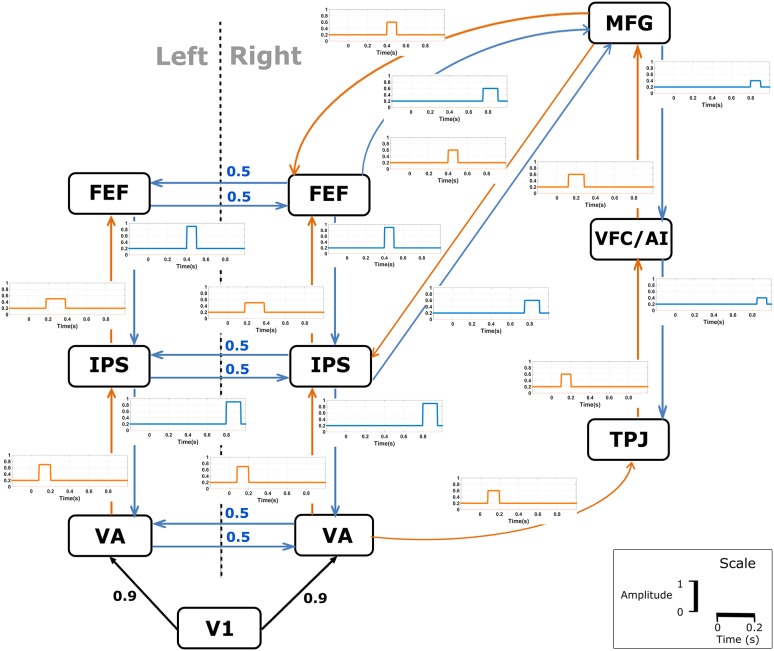Fig. 1.
The simulated visual spatial attention model consisting of an input area (V1), two visual areas (VA), the intraparietal sulcus (IPS), the frontal eye fields (FEF), the temporoparietal junction (TPJ), the anterior insula in the ventral frontal cortex (VFC/AI) and the middle frontal gyrus (MFG). The model was taken from (Corbetta et al. 2008) with some minor modifications: connections between FEF, IPS, and MFG were slightly adapted, and the visual input region was added. The arrows indicate directed interactions consisting of a stimulus-driven control (orange), top-down control (blue) and the visual input signal (black). Bidirectional interhemispheric connections were modeled as stationary with a strength of 0.5. The time-varying MVAR connectivity was imposed based on the timings of the significant effects observed in different regions as described in (Simpson et al. 2011) and (Vossel et al. 2014) and are shown by the figures next to each directed connection. These time-varying connections were added on top of the stationary connection in which the latter had a strength of 0.2. The time lag for MVAR parameters for the connection in blue and orange was chosen as 16 ms and for black as 4 ms. The exact onset of the directional time-varying interactions, its amplitudes and duration as well as the time lag were chosen arbitrarily

